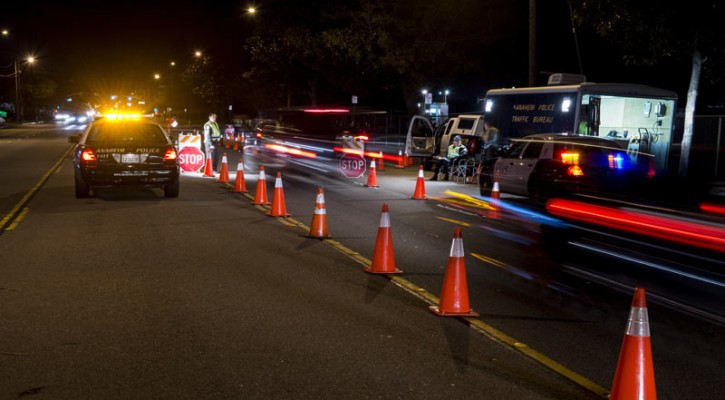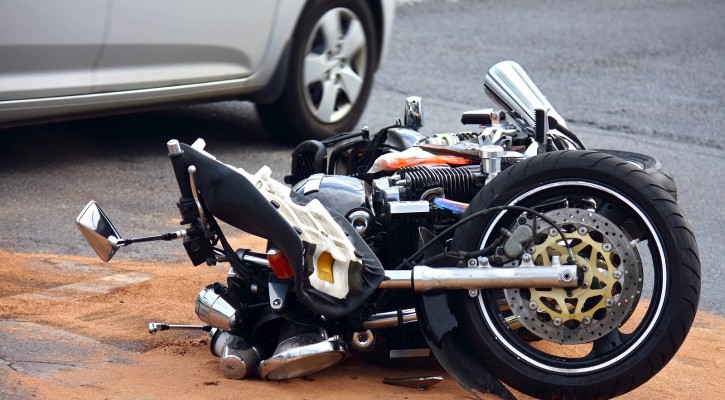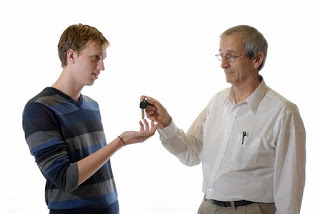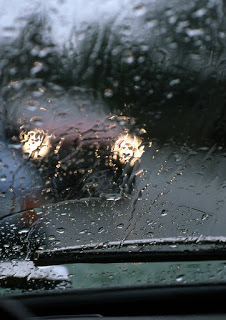Category Archive: Safe Driving

Spring Break Pedestrian Safety Tips
March 3, 2009
Many students look forward to spring break as a rite of passage. Taking a vacation from academics just as the weather turns warmer is a welcome break; it’s a time to hang out with friends and relax. Students often travel to a beachfront community so they can spend the week lying on the sand, playing beach volleyball, and participating in water sports.
Businesses in beachfront communities typically welcome spring breakers. But the increase in all types of traffic can be frustrating for year-round residents, and spring breakers themselves may drive carelessly or recklessly. This can prove deadly for pedestrians, who must often cross beachfront avenues to access the beach or nearby businesses.
According to the National Highway Traffic Safety Administration (NHTSA), in 2007, 4,654 pedestrians were killed and 70,000 pedestrians were injured in traffic crashes in the United States. On average, a pedestrian is killed in a traffic crash every 113 minutes and injured in a traffic crash every eight minutes. Forty-eight percent of all pedestrian fatalities in 2007 occurred on Friday, Saturday, or Sunday.
Tips for Pedestrians
Pedestrian safety is an important, though often unconsidered, aspect of spring break safety. As a pedestrian, follow these tips to make the most of your spring break:
- Put safety first. You are on spring break to have fun, but disregarding your own safety could result in tragedy.
- Don’t assume that motorists will yield to you when you are at an intersection or even in a crosswalk. Be especially careful at intersections where drivers may be turning onto another street. If you are in their path, they may not see you in time to stop.
- Use a designated crosswalk when possible. Stop and look left, right, and left again before crossing.
- Stand on the curb or off the roadway while you make sure it is safe to cross the street. If your view of the street is blocked, stop when you reach the edge line of the object and look around it before entering the roadway.
- Include motorcyclists and bicyclists in your visual search before you cross the street. A collision with any other vehicle, even one with only two wheels, could result in serious injury or death.
- If there is no sidewalk and you must walk in the street, walk facing traffic and be especially careful.
- At night, try to cross the street only in well-lit areas. Increase your visibility to others by carrying a flashlight.
Tips for Motorists
Of all the highway users, pedestrians are the most vulnerable, so drivers have a special responsibility to watch for and protect pedestrians.
- Let go of assumptions you may have about pedestrians so you can put their safety first. Many pedestrians are not fully aware of traffic laws, including those that pertain to signals. Many do not know the distance needed to stop a moving vehicle. Never assume that pedestrians will move out of the way. Be ready to stop to allow a pedestrian to cross safely.
- Many pedestrians take for granted that drivers will yield the right of way to anyone in the crosswalk. When they cross at an intersection with a Walk signal, pedestrians may not even look for oncoming traffic. Always watch for pedestrians in case they are not watching for you.
- Pedestrians waiting to cross the street often stand in the street instead of on the curb. Groups of pedestrians often separate when they are crossing the road. Some may even dash across the street without warning. When you see pedestrians waiting to cross, cover your brake and remain alert.
- Be especially vigilant about pedestrians at night, even in well-lit areas. It is often difficult to identify pedestrians at night.

Sharing the Road with Motorcycles
February 19, 2009
Motorcycles are less stable and less visible than cars, and they have high performance capabilities. For these and other reasons, motorcycles are more likely than cars to be in crashes. And when motorcycles crash, their riders lack the protection of an enclosed vehicle, so they’re more likely to be injured or killed. Per mile traveled, the number of deaths on motorcycles is about 26 times the number in cars. A rider who isn’t wearing a helmet is 40 percent more likely to suffer a fatal head injury, compared with a helmeted rider.
The actions of motorcyclists can affect motor vehicle operators in numerous ways. When you follow a motorcycle, remember that motorcycles have the ability of stopping much more quickly than other vehicles in emergencies. Following too closely endangers your life and that of the motorcyclist.
In addition to maintaining a safe following distance from motorcyclists in front of you, check your rearview mirror and be aware of motorcyclists following you. When a motorcyclist is following you, be especially careful not to make any sudden stops.
Weather and road conditions present greater problems to the motorcyclist than to the driver of a motor vehicle. A puddle may hide a hole that jolts your car; the same hidden hole can throw a motorcycle out of control. When it rains, reduced traction makes it difficult for a motorcyclist to balance. It is more difficult for the motorcyclist to stay in control on slippery roads. Wet or icy roads impair a motorcyclist’s ability to brake and maneuver. Wind gusts can move a motorcycle across an entire lane. Gravel roads decrease traction and may cause a rider to slow down or brake where a car would not. Allow extra space for motorcycles in all adverse conditions. Use extra care when you are following a motorcyclist that is crossing railroad tracks. Railroad tracks present a special problem for motorcyclists, because motorcycle tires can get caught in the grooves of the crossing, causing the rider to lose her or his balance.
When you are following a motorcycle that is carrying a passenger, use extra caution. Passengers change the way the motorcyclist should operate. A motorcyclist who is inexperienced in transporting a passenger may have extra difficulties with balancing and controlling the motorcycle.
Learn more about motorcycle safety and sharing the road with motorcycles.

Ten Tips for New Drivers Before and After Getting Licensed
February 12, 2009
Tips for Before you Get Your Drivers License:
1. Learn the material in your driver handbook, not just so you can pass the test, but so you can carry the information into your driving behavior.
2. Memorize the graduated licensing laws in your state. Not only must you follow them, but you shouldn’t ride with anyone who isn’t following them.
3. Talk to your parents about their expectations and the rules you’ll have to follow to use the family car or get your own vehicle. The time to refine the rules is now, before you have your license.
4. Encourage your parents to let you practice driving in unfamiliar areas, at night, when it’s raining, and on expressways, not just on familiar streets close to home during daylight.
5. Learn to scan the driving scene ahead so you can anticipate problems and react in time. Ninety percent of driving decisions are based on what you see.
Tips for After you Get Your Drivers License:
6. Sign a driving contract with your parents, specifying driving rules and curfews. Incorporate your state’s graduated licensing laws into the contract. The contract should include an agreement for your parents to pick you up, no questions asked until the next day, should you be unable to drive or ride with someone else for any reason.
7. Ask your parents to let you continue practice-driving occasionally; every new driver can use the extra training.
8. Minimize distractions in your vehicle. Keep the radio volume low, put your cell phone away, and ask passengers to minimize conversation. Wear your safety belt and make sure all your passengers wear theirs.
9. NEVER use driving as a stress-reliever. Drivers who do this often speed or get distracted. Learn to manage stress in healthy ways – by taking a walk, taking a nap, talking to a friend, or volunteering.
10. Read the warning labels on any medicines, including over-the-counter (those that don’t require a prescription); many medications cause sleepiness or dizziness and shouldn’t be taken while driving. Read our most recent post on Teen Drivers and Prescription Drugs.
And of course, NEVER drink and drive.
Roadside Safety: What to Do If You Have a Breakdown
February 11, 2009
Vehicle breakdowns are stressful and can even be frightening, depending on the circumstances. If your vehicle won’t start in a parking lot, you have the advantage of being stopped in a safe place, but if the breakdown occurs while you are driving, you must take immediate action to ensure the safety of you and your passengers.
First, don’t panic. Panicking may cause you to make the situation even more dangerous. Stay calm and follow a logical progression to get your vehicle safely off the highway.
Your first action should be to slow down. You should also look for a safe place to pull over, but you must have slowed your vehicle sufficiently to use the space you locate. Remember that if you pull off the pavement, your vehicle will lose traction; if you haven’t slowed down enough, your vehicle could skid.
Once you have located a safe place to pull off the road, try to park where the disabled vehicle can be seen for at least 200 feet in each direction. Avoid pulling off in a curve or near a hill. Move the vehicle so all four wheels are off the pavement or traveled portion of the roadway.
In addition to making your vehicle visible, you must make it obvious that the vehicle is stopped. This is particularly important:
- at night or in bad weather such as rain or fog, when drivers may be using the lights of other vehicles to guide them
- considering drivers who may be sleepy or even under the influence of alcohol or drugs
- on the highway, where drivers may be suffering from “highway hypnosis,” a condition that sometimes occurs for people on a long trip
Turn on your emergency flashers, tie a white cloth to the left door handle or antenna, and raise the hood to indicate that your vehicle is stopped and disabled.

Environmental Effects on Driving a Car
January 29, 2009
We cannot avoid environmental conditions when we drive. Sometimes, conditions are favorable: a clear day with good visibility. Other times, challenging environmental conditions such as rain, fog and wind exist. Understanding how to properly handle these challenging conditions will make driving in them safer and less stressful.
Even a day filled with sunshine can present problems when driving. Too much light can make it difficult to see ahead. Wear sunglasses or use your sun visor. Always keep the lower edge of the sun visor pushed toward the windshield. Clean the inside of your windshield and all windows at least once per week. Sunshine on a dirty windshield creates glare.
Night driving requires adjustments too. The lack of light reduces detail and conceals hazards such as pedestrians, bicycles, stalled cars, and curves. It is more difficult to judge the speed and position of other vehicles. You must depend largely on your headlights, which will show only a relatively short and narrow path ahead. Headlights do not bend around corners; they will only illuminate what is directly in front of you. Highway lighting may be limited. Glare from roadway lights, business signs, and the headlights of oncoming vehicles may impair your visibility.
Other conditions that can greatly affect visibility are fog, haze, smoke and mist. Be especially careful of patches of fog in valleys and low-lying areas. It is best not to drive in fog or smoke. If you must, slow down, turn on your low beam headlights, and be ready for a fast stop. Be alert for slow-moving or stopped traffic. Check your rearview mirrors frequently for vehicles that are approaching quickly from the rear. Use windshield wipers in heavy fog. If the fog or smoke becomes so thick that you cannot see well enough to keep driving, pull off the road until conditions improve. Pull over as far to the right as possible, off the main travel portion of the roadway. Leave your parking lights on and activate your hazard lights.
During rainy conditions, wet roads will increase stopping distance. Roads are most slippery just after it begins to rain because the rain mixes with oil dropped from cars onto the road, creating a very slick surface.
When you are driving in the rain, slow down. Driving too fast in the rain makes hydroplaning more likely. When a car hydroplanes, the tires ride on a thin film of water instead of on the road. When this happens, you can easily lose control and skid. Your vehicle can hydroplane in as little as 1/16 of an inch of water. If the tread on your tires is worn, your vehicle is more likely to hydroplane. Besides slowing down, you can also reduce your chances of hydroplaning by making sure your tires have the right air pressure and good tread. If your vehicle hydroplanes, ease your foot off the gas and allow your vehicle to slow down until your tires gain traction with the road.
